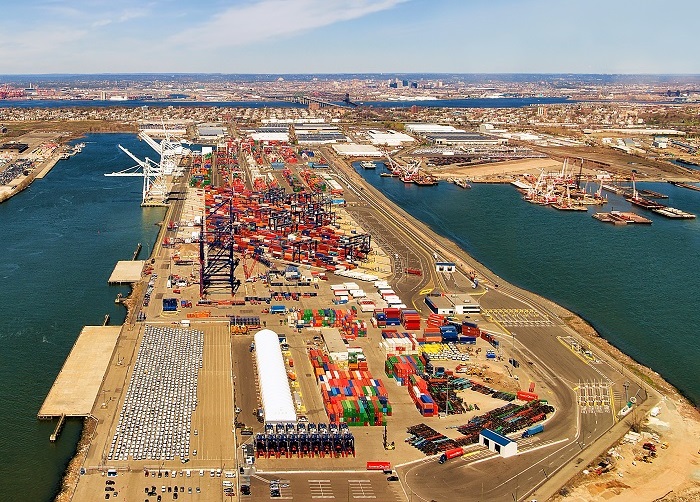
05/08/2022
U&I Logistics - As a large complex on the US East Coast that receives millions of containers from Europe, the ports of New York and New Jersey have handled a record number of imported containers during the pandemic. After realizing that these imported containers have longer waiting times at ports, both ports are working on adding a “container imbalance fee” as a way to incentivize ocean carriers to move containers. out of the port faster, effective from September 1 2022.
The Port of New York and New Jersey announced new tariffs related to empty containers and export volumes to reduce container congestion. Both cargo containers and empty containers stored at the port for an extended period of time will be subject to a quarterly “container imbalance charge,” effective September 1.
Like other ports, the ports of New York and New Jersey have handled record volumes of imported containers during the pandemic and have seen these imported containers wait longer at ports. They have blocked capacity and slowed port productivity.

Under the new tariff, ocean carriers that do not move empty containers out of ports will be charged $100 per container. The port's new container export level stipulates that exports must equal or exceed 110% of the incoming container volume of a single ocean carrier during the same period. Both loaded and empty containers are included in the number of imported containers. export. Rail volumes are excluded.
Under the new tariff, ocean carriers who do not move empty containers out of the port will be charged $100 per container. The port’s new container export levels mandate that export volumes must equal or exceed 110% of an ocean carrier’s incoming container volume during the same period. If that benchmark is not met, the ocean carrier will be assessed a fee of $100 per container for failing to hit this benchmark. Both loaded and empty containers are included in the import container count. Rail volume is excluded.
The port has created temporary storage for both empty and long-term imported containers. In addition, the port is also negotiating and researching additional areas that can be utilized as storage space.
“The Port of New York and New Jersey is facing record import volumes, leading to empty containers accumulating in and around the port complex that are now affecting the regional supply chain that is already under stress from various sources across the country,” said Bethann Rooney, director of the Port Department at the Port Authority of New York and New Jersey.
The decrease in productivity can be seen in the increased travel time of vessels. The increased anchorage times can be tracked in the vessel transit time from China to the Port of New York and New Jersey.

“We emphatically encourage ocean carriers to step up their efforts to evacuate empty containers quicker and at higher volumes to free up much needed capacity for arriving imports in order to keep commerce moving through the port and the region”, he said.
U&I Logistics
(Source: CNBC)